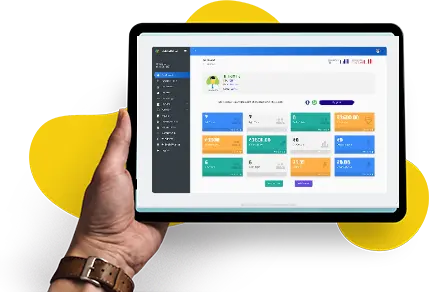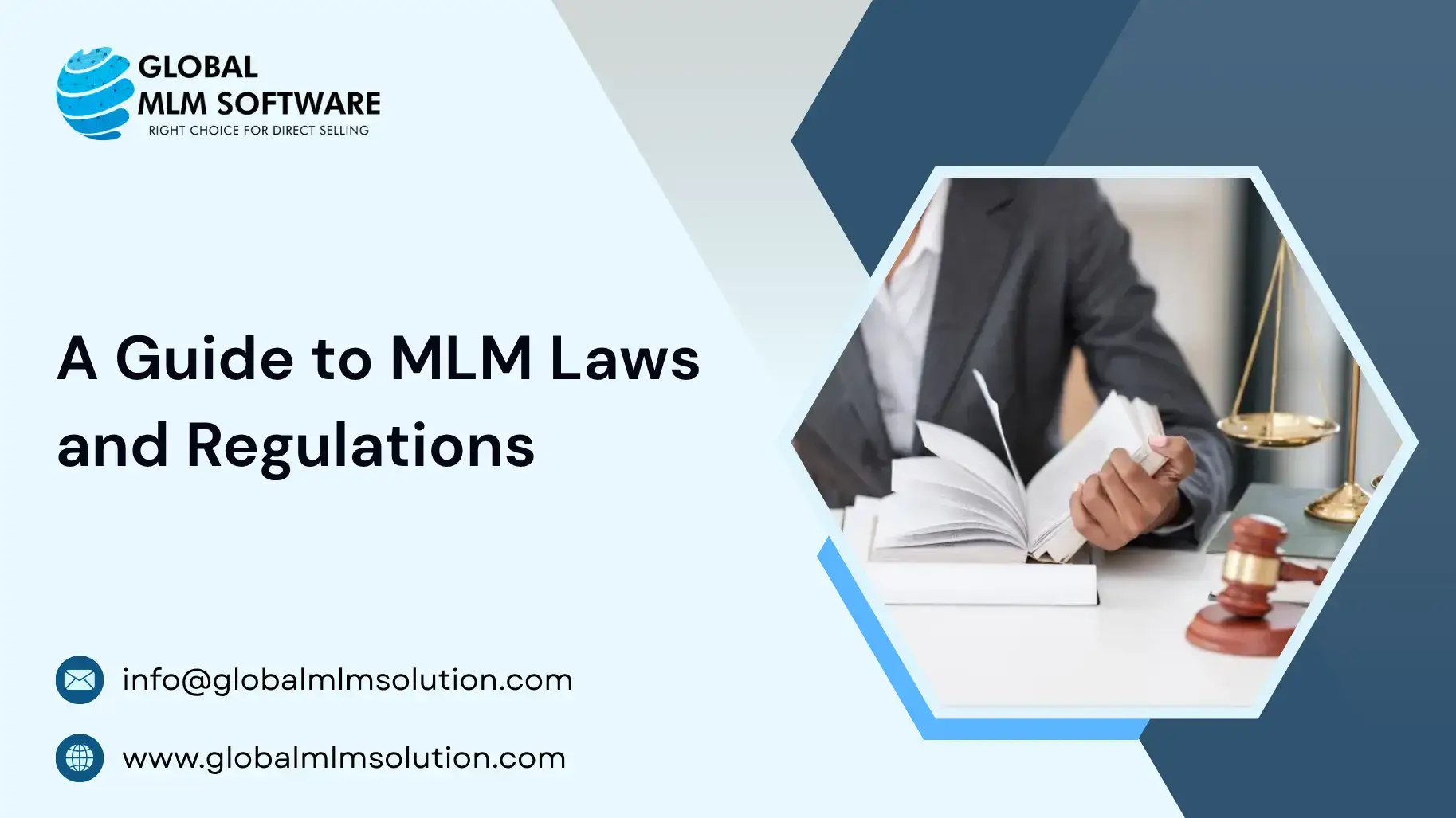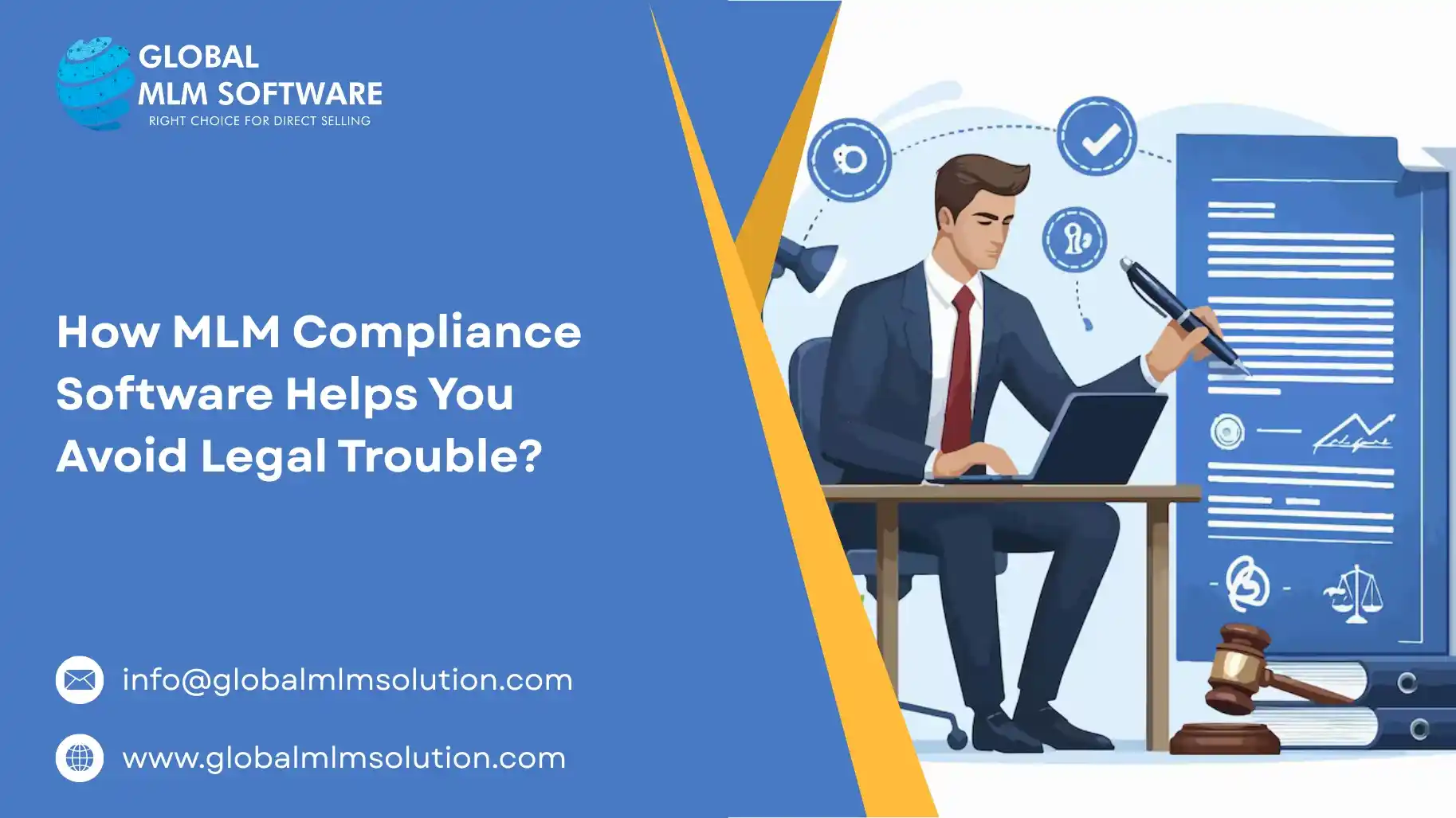Many MLM businesses that are working legitimately are accused of being a pyramid scheme. And we are here to change this.
We’d help ethical MLM businesses continue their operations, grow, and become top players in the industry.
For this reason, we have developed the ultimate MLM compliance checklist, which addresses your compliance needs from an MLM perspective.
If you are new to MLM compliance, this checklist contains each aspect where you need to focus. And if you have an existing network marketing compliance procedure in place, this checklist works great for ensuring that you are following everything required.
So, let’s begin.
This Article Contains:
What is Multi Level Marketing compliance?
MLM compliance, or multi-level marketing compliance, is the process of ensuring that MLM businesses follow the rules and regulations set by organizations, such as the Federal Trade Commission.
The primary aim of MLM compliance is to provide your business with a legitimate stand. Though there’s a huge difference between an MLM business and a pyramid scheme, sometimes the line appears blurred. At that time, it’s beneficial to showcase your compliance efforts, whether it's training, true and clear earnings, or a straightforward compensation plan, as evidence of your business’s legality.
Importance of the MLM Compliance Checklist
Though FTC’s guidelines and DSA’s Code of Ethics provide essential guidance for MLM companies, there are no specific MLM guidelines that you can follow. There are multiple acts that one needs to understand, consider various interpretations, and define their implementation in your MLM business operations.
To make things easier for you from an MLM perspective, we have done this job for you. We simplified the important aspects and compiled all the necessary pointers into one MLM compliance checklist.
After following the checklist, you’ll be able to cover most of the aspects of networking marketing compliance and perform your operations accordingly.
So, let’s check out what the MLM compliance checklist contains.
MLM Compliance Checklist
Our direct selling compliance checklist will support you in creating a compliant compensation plan, performing legal recruitment and downline creation, and familiarizing you with the necessary documentation tasks.
Overall, by having our direct selling compliance checklist by your side, you’ll get the right direction for your compliance efforts.
MLM Compliance Checklist
Download NowLet’s check out what our compliance checklist includes.
Compliant Compensation Plan: Strengthen the Core
A compensation plan is the cornerstone of your MLM business, and that’s the primary attribute that the Federal Trade Commission scrutinizes when it suspects a pyramid scheme.
So, how should you create your compensation plan?
The simple answer is: keeping it clear, easy to understand, and non-deceptive. When a distributor goes through the compensation plan, they must understand every bit of it to avoid any dispute later and ensure direct selling compliance.
Besides that, the compensation plan should be created keeping the sales in consideration and not the recruitment.
For instance, if you only allow payouts when the distributor achieves a certain number of recruits, then it’s illegal and will be considered a pyramid scheme.
Even your compensation plan should not make it compulsory for distributors to create a downline; if they want to make sales and earn income, they should be free to do that.
And when they make sales, it should be made to the end user and not for earning personal PV. The compensation plan should restrict the quantity of products that distributors purchase. They must not be making these purchases only to qualify for compensation, maintain their rank, or achieve a bonus to ensure network marketing compliance.
MLM Compliance Training: Pass on the Compliance Knowledge
MLM training is a requirement in case of sales and presentations. However, when it comes to compliance, it’s a necessity as per MLM regulations. That’s why it plays a huge part in designing our MLM compliance checklist. You need to conduct training not only to provide distributors with the right knowledge but also to showcase your efforts towards compliance.
When you conduct training, it allows you to explain to your distributors what they can commit to and what they can’t, what they can claim about the products, how they should perceive the opportunity, what your MLM business’s policies are, and how distributors can adhere to them.
When training is not conducted, your distributors will never know what’s essential for direct selling compliance. They’ll make efforts to recruit people, no matter what, and this will drag you into the category of a pyramid scheme.
Yes, you heard us right.
Your distributors are considered your agents in legal terms, and if they conduct non-compliance, it is considered the MLM business’s liability.
Earning Claims: Do it With Transparency
Every MLM business or even a business working on a traditional sales model, will have a few sales professionals or distributors who stand out from the rest because of their high earnings.
If you present them as examples, highlight them, and make earning claims, keeping them in the limelight, it’s a big NO.
Why so?
Because the picture you present is not the real one. Showing the highest earnings as typical is non-compliance.
When you make a claim, display earnings made by the top 50%, top 10%, and 1% for different ranks, and divide them into the lowest and highest monthly earnings. Also, showcase earnings for the first year and overall earnings to give a clear picture of the growth path.
A Complete Earnings Disclosure Format
Download NowIf you present your earning claims in this format, it sets realistic expectations for distributors.
If you find it tough to track your earnings and payouts, try out Global MLM Software, which automates the entire payment cycle for you as per your compensation plan.
Besides that, it’s necessary to update claims every year to keep them relevant.
Now, many of the MLM businesses calculate earnings based on the sales distributors make. However, that’s not the right thing to do. You need to add the expense as well.
Therefore,
Distributor Earnings = Total Sales Amount - Cost Price of the Product - Other Expenditures (travel, training expenditure, etc.)
And obviously, you can’t make the earnings claim by simply mentioning them. By adding evidence to earning claims, you can improve the transparency and build trust.
Also, it allows the authority to audit the claims with ease, making your standing legitimate.
Now, this applies to your distributors as well. Whatever earning claim they make must align with yours.
Also, it should be an integrated part of your MLM policy not to make earning claims based on hypothetical situations, such as:
Within a few months, you’ll be able to make more money than in your job.
If you work hard, nobody can stop you from achieving your earning goals.
It will be an additional income to what you are doing and will help you pay off the debt.
Refund Policy: A Must-Have Addition to MLM Compliance Checklist
What if you don’t provide a refund policy for your MLM business? Is it necessary?
The answer is yes.
If you don’t have a refund policy, that means you aren’t compliant.
So, what if you create a 7-day or 30-day refund policy? Will that be enough?
No, to comply with Section 5 of the Federal Trade Commission, you need to have a buyback policy where the distributor is allowed to send back the unsold products.
What if the products are opened, not in good condition, or have no shelf life?
Most MLM companies only buy back products that are properly sealed, are in good condition, and have a reasonable shelf life. This can be considered, but to ensure MLM compliance, clearly mention these terms with the distributors before getting into an engagement. You should also mention whether you’d provide a refund for expenses incurred and terms regarding eligibility for rewards and bonuses.
How the MLM refund process should work? It’s up to you how you design the complete refund process, but as per the part of our MLM compliance checklist, it should not be complicated, and it should be easy to navigate.
Record Keeping Requirements: Evidence is as Necessary as Efforts
Maintaining records helps MLM businesses to provide a straightforward audit trail to the Federal Trade Commission. It also assists you in showcasing your compliance efforts to prospects and building trust.
What are the record-keeping requirements that you must fulfill under the MLM compliance?
As per our MLM compliance checklist, when your MLM business or its distributors communicate with prospects, transcripts of messages, emails, and information shared must be kept on a centralized cloud platform.
Next, if you onboard a member, share the earnings disclosure document, refund policy, compliance policy document, product details, compensation plan, claims that can be made, and information about advertising rules.
However, it’s not enough to share the information. It’s necessary to have a document signed by the distributor working as proof that all the necessary details are shared by the MLM business and for the distributor to have checked and agreed to it.
You must also provide the distributor with the necessary compliance training, and once it is completed, the distributor must sign a document confirming that they have received and understood the training.
Finally, coming to earning claims documentation, you need to have complete details of sales made by each distributor and what the payout is with respect to the sales. In addition to that, keep a record of their expenses as well and see how much profit they are making.
Purchase and Inventory Compliance: Only for End User Sales and Self-Use
When a distributor purchases inventory for any use other than making sales to end users or for their own use, it is most probably forced.
There are several scenarios where distributors purchase products that they don’t need:
To achieve a minimum PV to become eligible for the commission
To earn rewards by achieving a certain sales amount
To become eligible for the next rank by completing a milestone
These are some of the examples, and there can be several such instances where distributors are left with no choice but to load their inventory.
However, you can put a check on it; you can request distributors to submit sales receipts to ensure that the purchase is made by the end user.
There’s a catch here.
Distributors often make the sales receipt in the name of friends and family, even though they don’t sell the product to them.
Countering this loophole can be challenging, but at least let the distributors know that such sales receipts won’t be accepted to fulfill your MLM compliance duties.
Product Claims: Be Truthful About What You Sell
Though it’s applicable to all product-based businesses, our MLM compliance checklist suggests that MLM businesses stay extra careful about what they claim, as it not only involves the business but also the distributors.
So, whatever the distributor claims on your behalf is considered as well.
For instance, you are a skincare brand selling an acne removal facewash, and your distributor claims that the facewash removes acne in seven days; then it should do the job, or else it leads to non-compliance.
The best way to avoid such an issue is to provide a document publicly that contains scientific evidence and expected results according to which claims are made. You must ask your distributors to follow the same. One, it helps you stay MLM compliant, and two, it makes the sales better, as every word is backed by proof.
This also applies to influencers and endorsers of your product. They can provide their honest opinions, but whatever claim they make should be an acceptable statement under the law. If you find any such instance where an illegal claim is made, you must publicly clarify that the statement doesn’t have anything to do with your MLM business.
Also, if there are any side effects, potential risks, or allergic ingredients, you need to disclose that publicly, and whenever your distributor makes a sale, he should also convey it. Though if it is disclosed on the product itself, it takes care of the compliance.
Communication Compliance Needs for MLM Businesses
There are several acts governing the communication between the MLM business and customers. It applies to businesses and also to their distributors, according to which of the following pointers needs to be followed:
The email communication should not have false messaging, whether it’s the header, subject line, or content.
One must clearly show that it’s the advertisement email. Also, you and your distributors need to add the complete postal address in the email.
In case the consumer or prospect wants to opt out of getting contacted, they must be able to do it easily, and the opt-out request should be fulfilled quickly.
While communicating, MLM businesses and the distributors must be honest about earnings and can’t make false promises.
They must follow rules about when and how they can call, and respect the Do Not Call list. Robocalls need clear permission from the person first.
MLM businesses need permission from prospects and consumers on whether they can send them marketing and promotional messaging or not. It also covers the messaging related to recruitment in the case of MLM.
Online Sales Compliance: Essential for Ecommerce MLM Businesses
If your MLM business sells online, then it’s essential for your business to provide accurate information on the website. Even if you mention that “any inaccuracies or outdated information available on the website is unintentional and the company is not responsible for it” in your terms and conditions, it’ll still be your responsibility.
Besides that, data shared when the prospect visits the website, creates an account, or makes a purchase should be kept private and must not be shared with third parties without informing the person whose data you are going to share.
When you are going to charge a customer once or on a recurring basis, you must clearly obtain consent before charging. For a subscription-based model, you must have a straightforward mechanism for the customer to opt out. If the opt-out requires customers to go through an endless, complicated process, your MLM compliance fails.
And when you make sales online, there will be online reviews too. And when there are online reviews, some would be negative and some would be positive.
MLM businesses must not prevent people from putting their honest reviews, even if they’re negative.
It’s Time to Put the Checklist to Use
Compliance may appear tough, but once you put all the pieces in the correct place, you’ll only need to follow the MLM compliance checklist and keep it updated as per the amendments in the laws and regulations.
When you start putting efforts for MLM compliance, always keep an eye out for red flags, such as a distributor making hypothetical earning claims in the text, people are doing unnecessary inventory loading, your compensation plan is getting complex as you are adding new attributes, etc.
When you can track these red flags and work to solve them, non-compliance will become nothing but a thing of the past.
FAQs
1. What is an MLM compliance checklist?
An MLM compliance checklist is a structured list of guidelines and best practices that ensure a multi-level marketing company operates within legal boundaries. It helps businesses stay aligned with laws such as FTC guidelines, anti-pyramid scheme rules, and other industry regulations.
2. What are the key components of an MLM compliance checklist?
Compensation plan compliance
Focus on retail sales over recruitment
Transparent income disclosures
Distributor training (legal and ethical guidelines)
Marketing claims monitoring
Refund and return policies
Data privacy and communication laws
Regular audits and reviews
References
-
ftc.gov
Disclaimer: Global MLM Software does not endorse any companies or products mentioned in this article. The content is derived from publicly available resources and does not favor any specific organizations, individuals or products.







